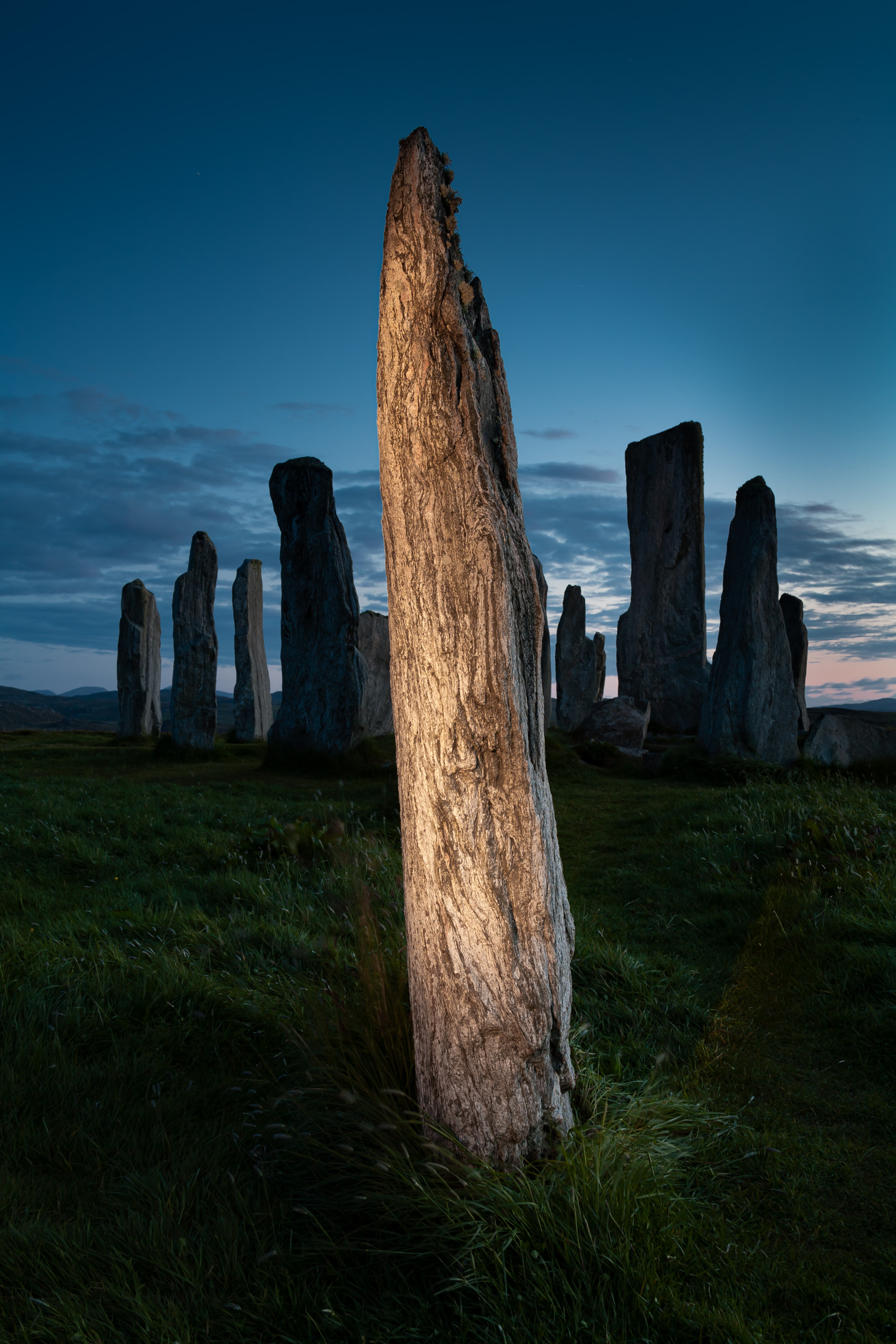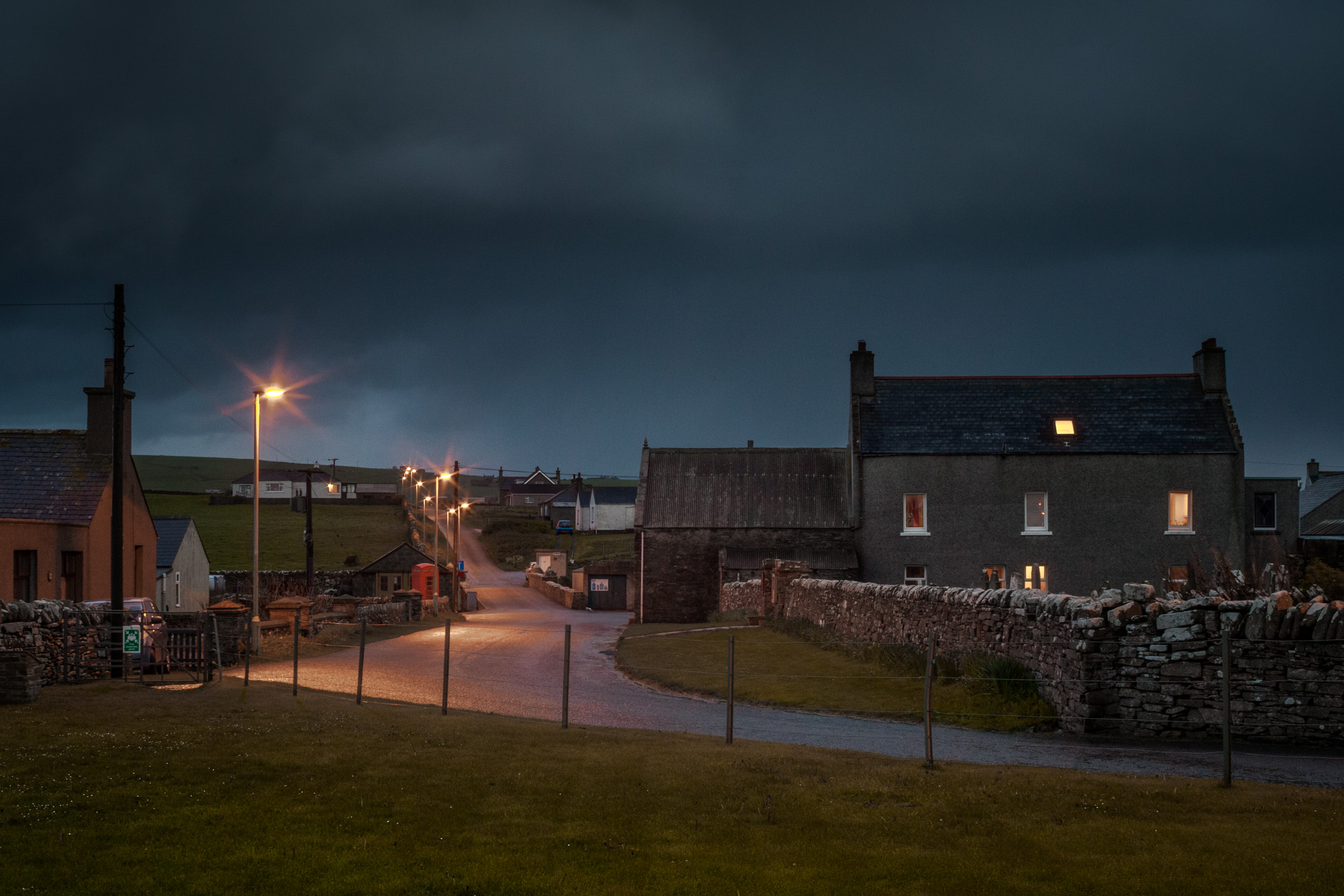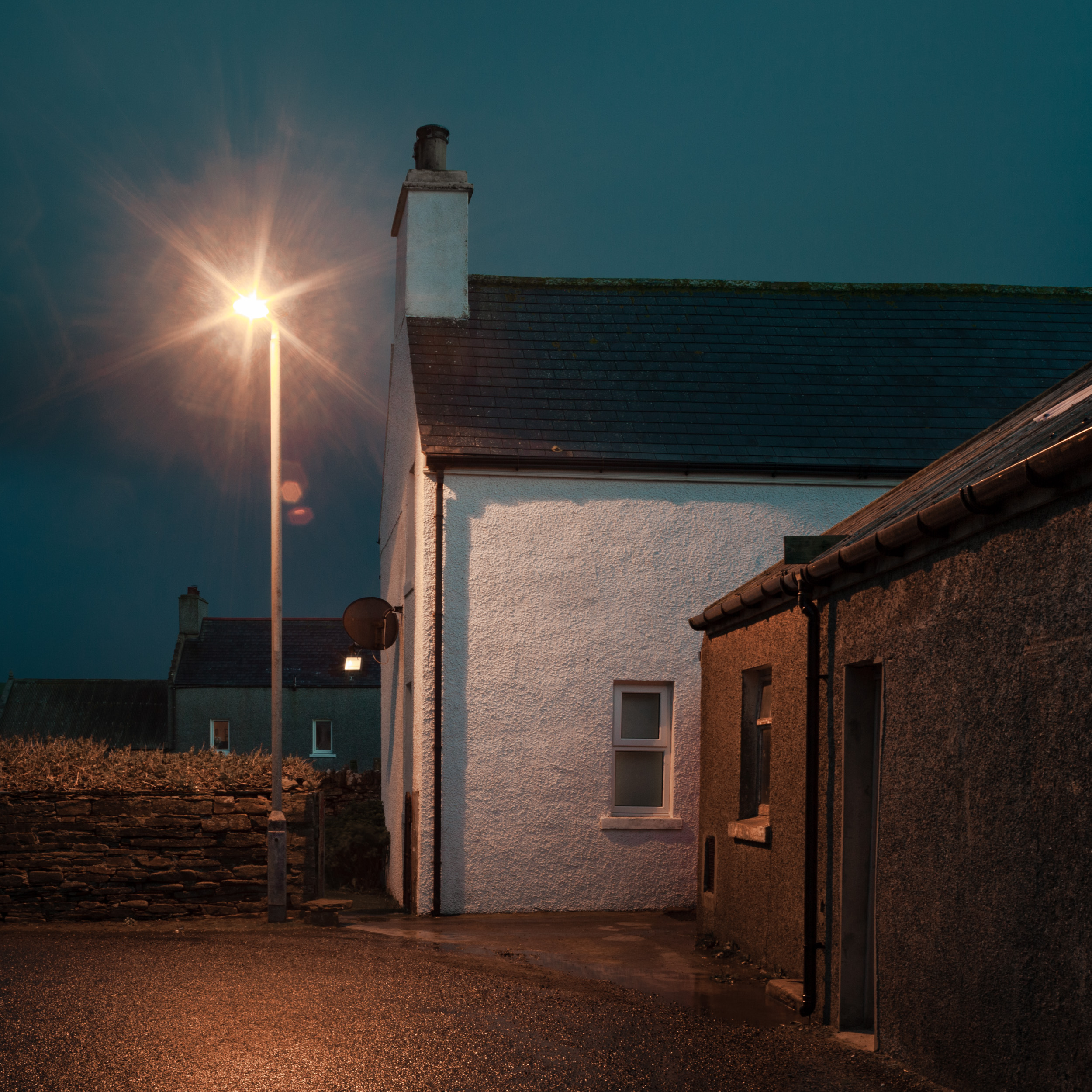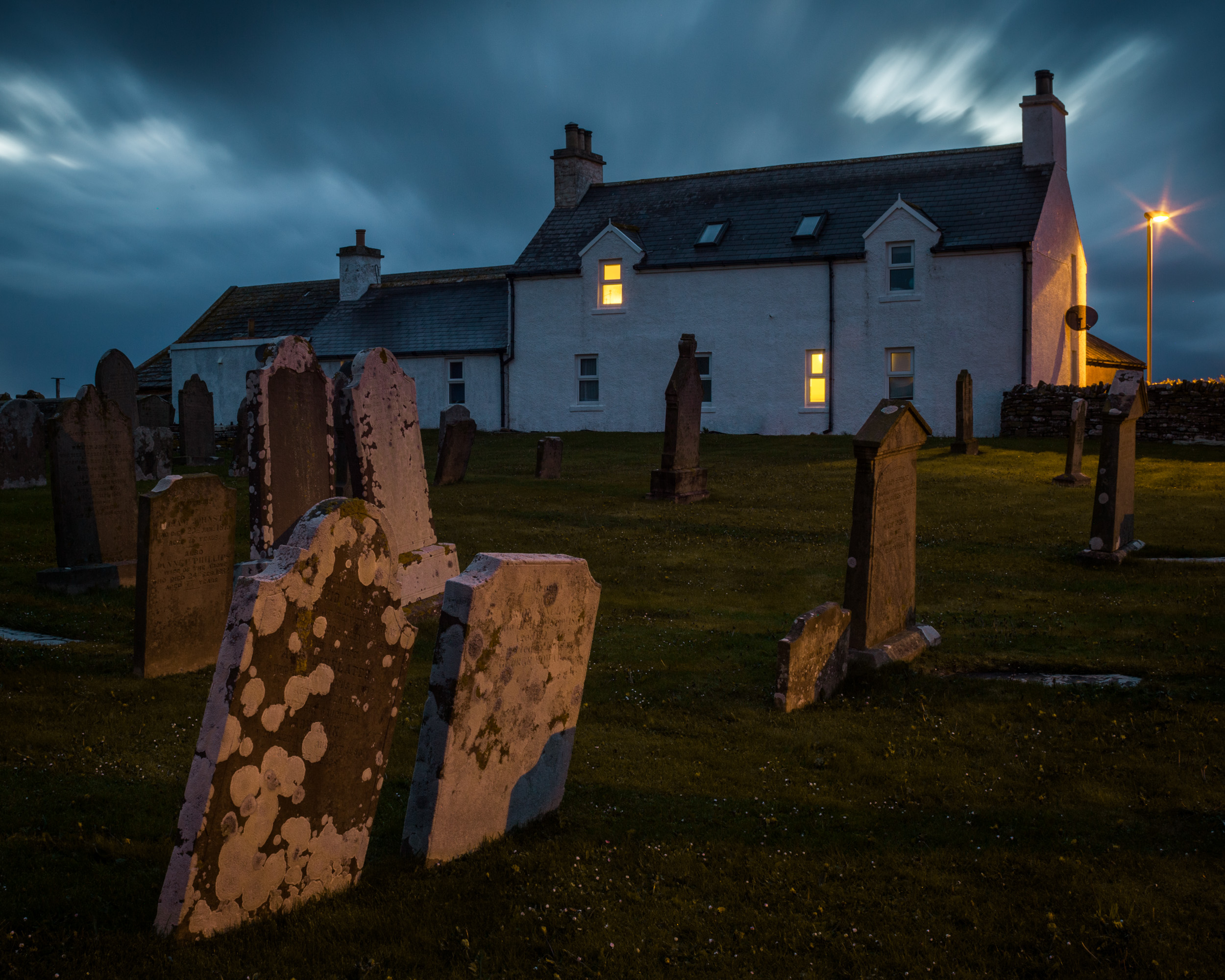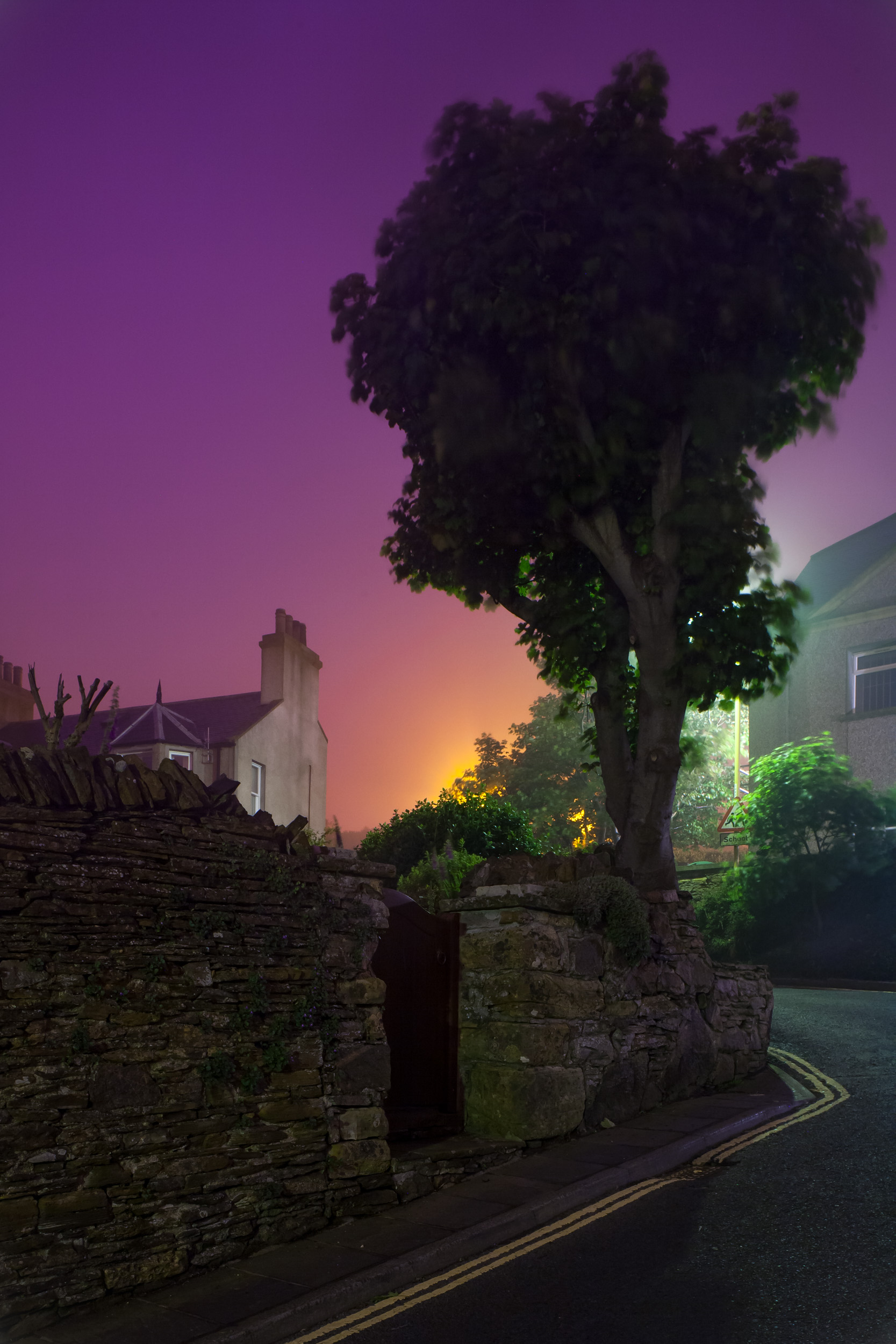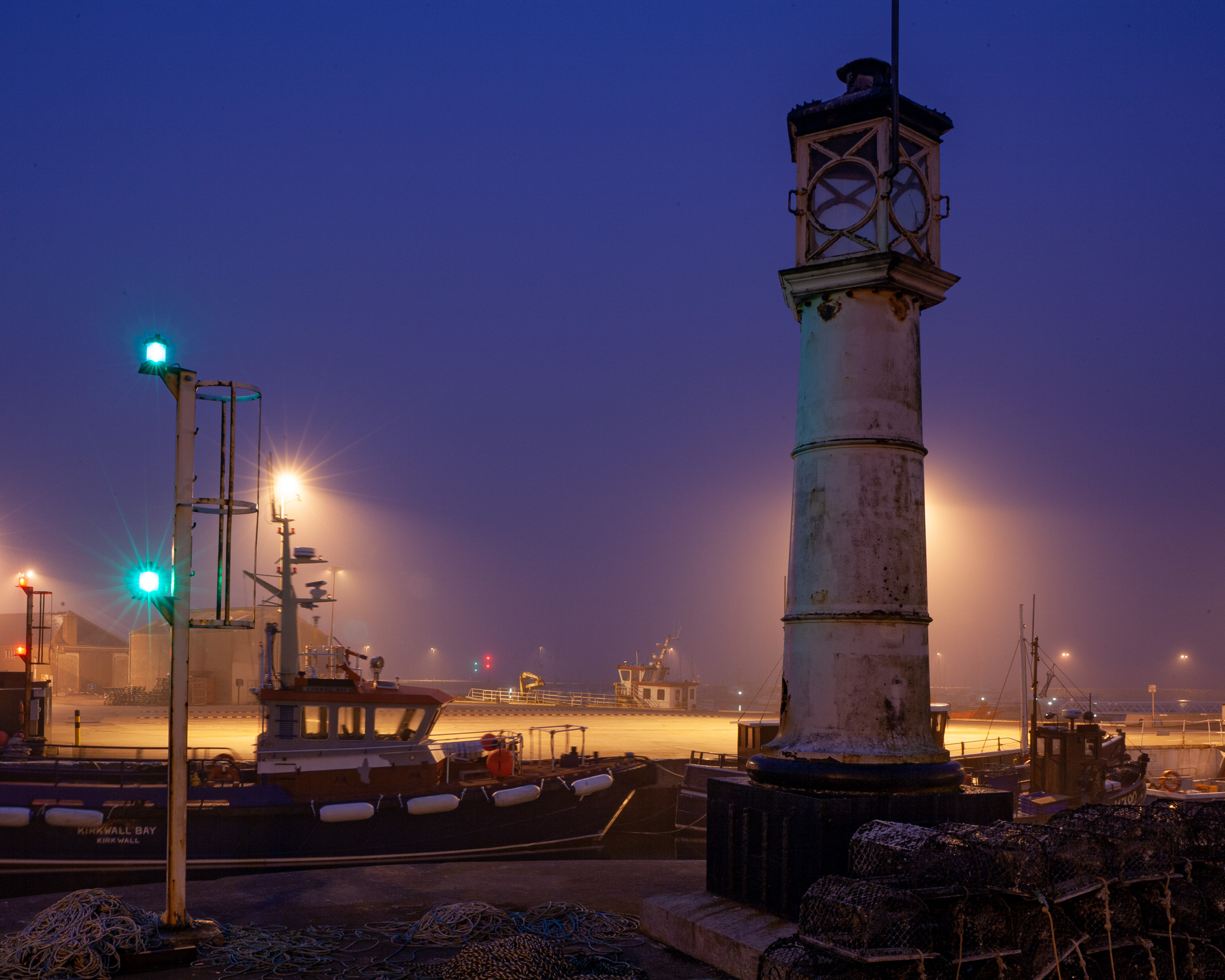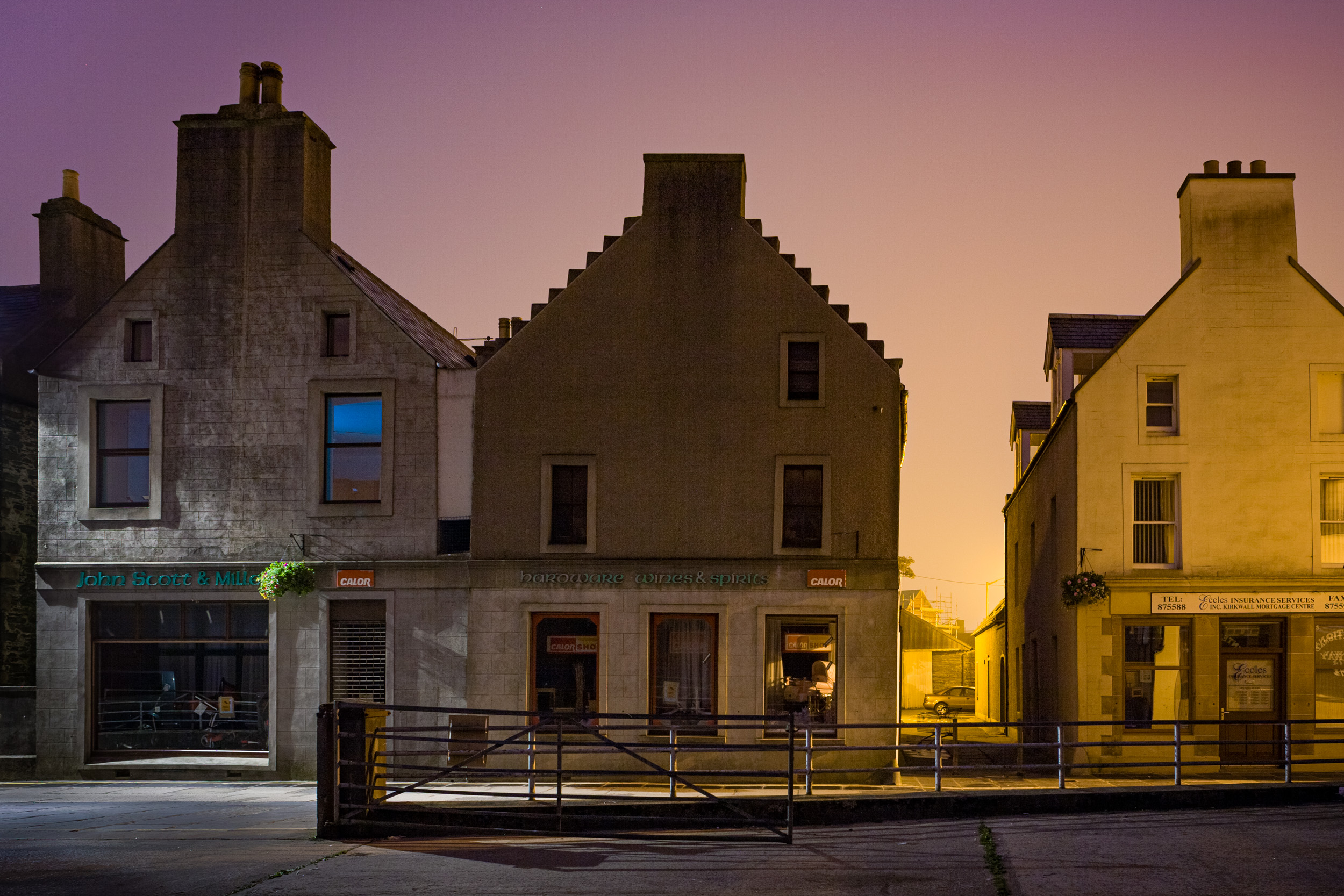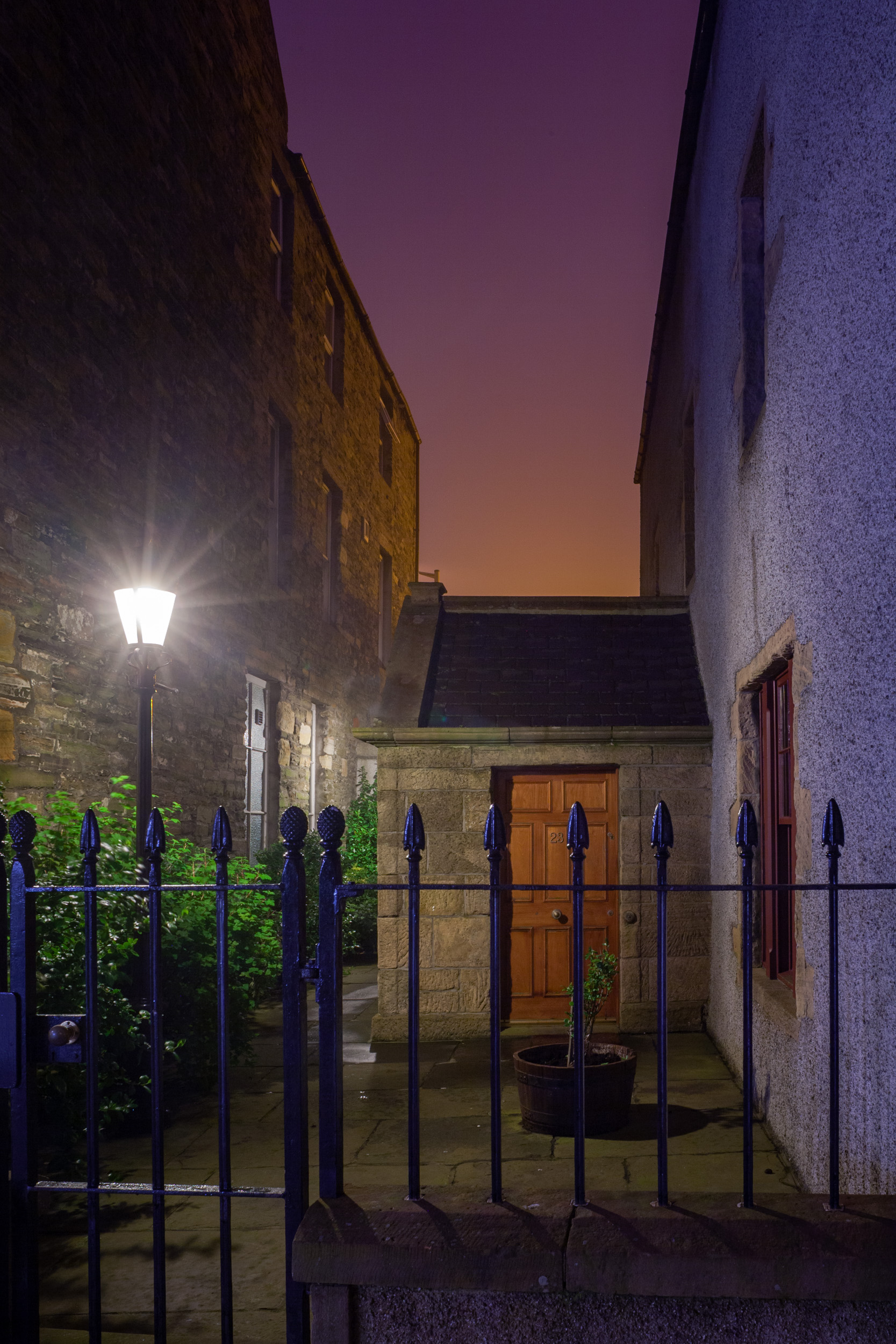What if I were to tell you that one of the best experiences a night photographer can have is to travel to a time and a place when the surrounds hardly get dark at all? The idea is not one of fantasy, but rather one of fancy. I much enjoy shooting in twilight, and with time to plan the travel properly, one can shoot in it all night long.
That time? Within a few weeks of summer solstice. That place? The further toward the north or south pole, the better.
Stones of Stenness, Orkney, Scotland. Canon 5D with a Nikkor 28mm f/3.5 PC lens. 30 seconds, f/8, ISO 800.
Chasing Twilight
Traveling to a far-northern destination in May or June (or to a southern one in November or December) may seem like an odd choice for a night photographer. It doesn’t get fully dark north of 47 north latitude for several weeks a year. To note:
Above the Arctic Circle, at about 66 degrees north, the sun never sets at all around the summer solstice.
Between 61 north and the Arctic Circle, (which includes Scandinavia, parts of Alaska, and Canada, Iceland and Greenland) the sun sets, but never gets more than 6 degrees below the horizon in high summer, which means the sky never grows darker than civil twilight.
Between 53 and 61 north (the United Kingdom, parts of Alaska and Canada), summer nights in June are spent in nautical twilight.
Between 47 and 53 north (much of Europe, China, Ukraine and the northern U.S.), it doesn’t get darker than astronomical twilight.
Yet all of these are great locations for night photographers. Just why is that?
Dornee, Kyle of Loch Alsh, Scotland. Canon 5D, Canon EF 50mm f/2.5 macro lens. 4 minutes, f/22, ISO 100.
To many contemporary photographers, night photography is all about the Milky Way, which we need dark skies to photograph. But there’s much more to night photography than that, which I’ve written about previously (see “Beyond the Milky Way” and “The Night Photography Mindset.”)
To that end, this article is about making the most of nautical and astronomical twilight, especially when it lasts through the night—which is exactly what it can do in many of those places mentioned above. (You can read a rundown of the different stages of twilight on EarthSky, or in Tim’s blog post “Out of the Blue: The Importance of Twilight to the Night Photographer.”)
Dusk That Never Quite Ends
One of the places that enjoys this phenomenon is Scotland, and it’s the Scots—especially those from Orkney and Shetland—who call this phenomenon “Simmer Dim.” This is one of my favorite times to photograph, especially when I’m lucky enough to shoot in those northern Scottish isles. (Which is exactly why we’re running a night photography tour in Orkney next May!)
Lerwick, Shetland, Scotland. Canon 5D Mark II, Zuiko Shift 24mm f/3.5 lens. 10 seconds, f/8, ISO 100.
Why do I love Simmer Dim? Imagine spending an entire night in twilight—that enchanting time between daylight and darkness when the earth’s atmosphere scatters the last rays of the sun’s light to create deeply saturated colors in the sky. It’s nothing short of magical. Under normal twilight conditions, there’s only a brief window of opportunity when the light is perfectly balanced for both sky and ground—but during Simmer Dim, that balance may last for hours.
I’ve been fortunate to photograph during Simmer Dim on many occasions, but there was one night in particular in early July 2007 that I’ll never forget. I was leading a photo tour of Orkney, and the weather had been rather gloomy for days with a dense fog that just wouldn’t break. The fog was so thick that it had begun to dampen our spirits, but we decided to go into Stromness—Orkney’s second largest town—to see if we could find a picture for the making. It was amazing!
The fog held the glow and the colors of the streetlights low in the sky, and they were perfectly balanced with the natural luminance of the twilight. We photographed all night until the sky began to lighten further around 3 a.m. We suddenly found ourselves hoping that the fog would last or come back the following evening. It did, and we spent the next night in Kirkwall—the largest town on Orkney—photographing through the night and into the morning again.
Tips for Twilight Photography
Photographing in twilight can be a little different depending on whether your environment is natural or settled—or, more precisely, whether it contains artificial lighting. In nature, twilight often calls for the use of light painting or graduated neutral density filters, as the light level at the ground is usually several stops darker than the sky. In urban areas, especially small towns and villages, the streetlights and sky require similar exposures during twilight, which means you can usually keep your filters in the bag.
In nature, such as one of our Beautiful National Parks:
Use a 2- or 3-stop graduated neutral density filter to even out the exposure between the foreground and sky.
Or, make multiple exposures for foreground and sky and combine them in Photoshop.
The color of light changes quickly at dusk, so consider using auto white balance. Or, do what Tim and Matt do, which is to use Daylight white balance to render colors “as they are” even if they’re not “what we expect.” These are both valid approaches to the same problem, albeit with different results.
Use an incandescent flashlight or other warm color temperature light source to contrast with the cool blue of twilight.
Keep an eye out for vampires.
In an artificially lit environment:
Look for a balanced exposure between the ground-level illumination and the sky.
Manually set your white balance. Choose a setting that makes your foreground look the way you want it.
Utilize the blinking-highlights feature to help maintain important highlight details in your exposure.
Make multiple exposures of the same scene at different stages of twilight.
Keep an eye out for hipsters.
Finding Simmer Dim
In the Northern Hemisphere, we’re past the Simmer Dim for 2019. Our Southern Hemisphere friends can look forward to it at the end of the year, but aside from Antarctica and the southern tip of South America, there’s not a lot of land that sees the effect.
Either way, it’s never too early to plan a trip for Simmer Dim 2020, and regardless, twilight in general is great for low-light photography year-round. Twilight is often dark enough for light painting, and is a great time to get better color saturation into your images. So get out there early and give it a go!
A Simmer Dim Gallery
Below is a selection of ten images from Simmer Dim shoots I’ve done, including the all-nighters mentioned above. For notes on the gear used and the exposures, download the accompanying PDF.
If you’ve shot in the Simmer Dim, please share your stories and images in the Comments section below or on our Facebook page. (And if you haven’t, come join us in Orkney next May!)
